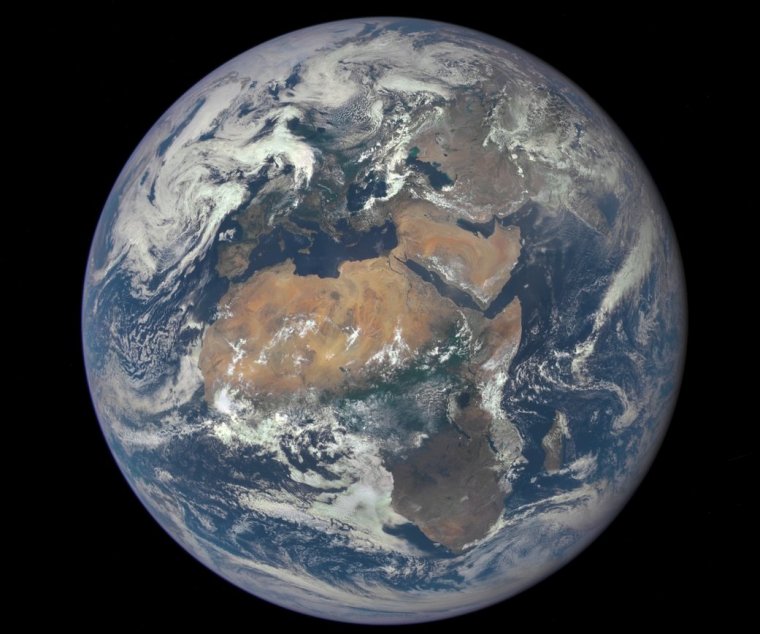| News / Science News |
Earth Tipped Over on Its Side 84 Million Years Ago, Righted Itself
If you'd been able to stare at Earth from space during the late Cretaceous, when Tyrannosaurus rex and Triceratops roamed, it would've looked like the whole planet had tipped over on its side.

Earth tipped over on its side 84 million years ago. Photo: NASA
According to a new study, Earth tilted by 12 degrees about 84 million years ago.
"A 12-degree tilt of the Earth could affect latitude that same amount," Sarah Slotznick, a geobiologist at Dartmouth College and co-author of the new study, told Insider.
Imagine the Earth as a chocolate truffle - a viscous center ensconced in a hardened shell. The center consists of a semi-solid mantle that encircles the liquid outer core. The top layer of the truffle, the Earth's crust, is fragmented into tectonic plates that fit together like a puzzle. Continents and oceans sit atop these plates, which surf atop the mantle.
The researchers found that, between 86 and 79 million years ago, the crust and mantle had rotated around Earth's outer core and back again - causing the entire planet to tilt and then right itself like a roly-poly toy.
Scientists can piece together a picture of which tectonic plates were where millions of years ago by analyzing what's known as paleomagnetic data.
When lava at the junction of two tectonic plates cools, some of the resulting rock contains magnetic minerals that align with the directions of Earth's magnetic poles at the time the rock solidified. Even after the plates containing those rocks have moved, researchers can study that magnetic alignment to parse out where on the global map those natural magnets existed in the past.
The study authors examined the magnetic alignment of ancient limestones they collected from Italy and found Earth's crust was moving about 3 degrees every million years during its tilt and tilt back.
"We never suspected we would see this full round-trip event," Ross Mitchell, a geophysicist at the Chinese Academy of Sciences and Slotznick's co-author, told Insider.
Imagine that the Earth is like a spinning top: If the top's weight is evenly distributed, it should whirl perfectly, without any wobbling. But if some of the weight were to shift to one side or the other, that would change the top's center of mass, leading it to tilt toward the heavier side as it spins.
According to Slotznick, upwellings of hot rock and magma - known as mantle plumes - from the outer core towards the crust may have played a role in altering how Earth's mass was distributed during the late Cretaceous.
But Mitchell said shifting tectonic plates could explain Earth's ancient 12-degree tilt. When hotter, less dense material from deep within the mantle rises toward to the crust, and colder, denser material sinks towards the core, these plates can collide. Upon impact, one plate will subduct, or sink, under another.
Prior to the late Cretaceous, the Pacific Plate - the largest tectonic plate on Earth spanning 40 million square miles under the Pacific Ocean - was sinking under another plate to its north. Around 84 million years ago, the Pacific Plate started subducting in a different direction, under another plate to its west. This change "might have very well changed the literal balance of the planet," Mitchell said.
He wasn't surprised to find the Earth had reversed course and tilted back.
"The planet's outer layer behaves elastically like a rubberband and would have snapped back to its original shape after the excursion," he said. (Tasnim News Agency)





